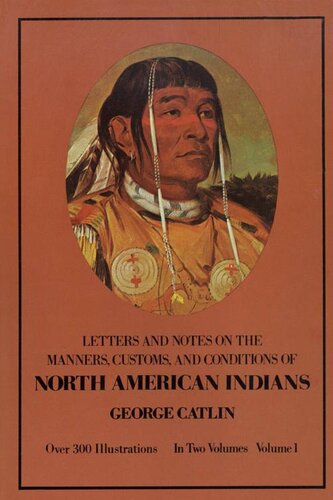

Most ebook files are in PDF format, so you can easily read them using various software such as Foxit Reader or directly on the Google Chrome browser.
Some ebook files are released by publishers in other formats such as .awz, .mobi, .epub, .fb2, etc. You may need to install specific software to read these formats on mobile/PC, such as Calibre.
Please read the tutorial at this link: https://ebookbell.com/faq
We offer FREE conversion to the popular formats you request; however, this may take some time. Therefore, right after payment, please email us, and we will try to provide the service as quickly as possible.
For some exceptional file formats or broken links (if any), please refrain from opening any disputes. Instead, email us first, and we will try to assist within a maximum of 6 hours.
EbookBell Team

5.0
50 reviewsCrow, Blackfoot, Pawnee, Sioux, Comanche, Mandan, Choctaw, Cheyenne, Winnebago, Creek, Assiniboin; wild prairies teeming with buffalo; the sacred site of Catlinite stone — all were subjects of Catlin's letters and paintings. For eight years (1832–39) George Catlin ventured among the Indians of the North American Plains capturing in verbal and visual pictures every facet of their lives. For the rest of his life, Catlin carried to Eastern America and Europe the true pictures of the North American Indians enjoying their last years of freedom and dignity in their native home.
Catlin's book is an adventure of the painter who was called "the great white medicine man" for his ability to paint.
Most importantly, his book is a book of direct, fresh, and accurate illustrations. Now for the first time Catlin's illustrations are shown as he meant them to be seen.
Two-hundred and fifty-seven photographs of Catlin's original oil paintings are included together with fifty-five of the original book illustrations. As a result this is the definitive edition of Catlin that can never be superseded, far more useful than any earlier edition.
George Catlin's North American Indians is still one of the most readable books about the Indians of the Plains, capturing, as it does, the tribes when they were still in touch with their most important traditions. It has also become an invaluable historic and ethnographic document for study of the American West. The Mandan tribe, which Catlin so carefully set down, disappeared in a small-pox epidemic only five years after his visit. Other tribes changed radically, their traditional mode of life seen only in Catlin's notes and illustrations. As Marjorie Halpin says in her introduction, " ... we can share the feeling of gratitude he expressed when he said, 'I was luckily born in time to see these people in their native dignity, and beauty, and independence … '"